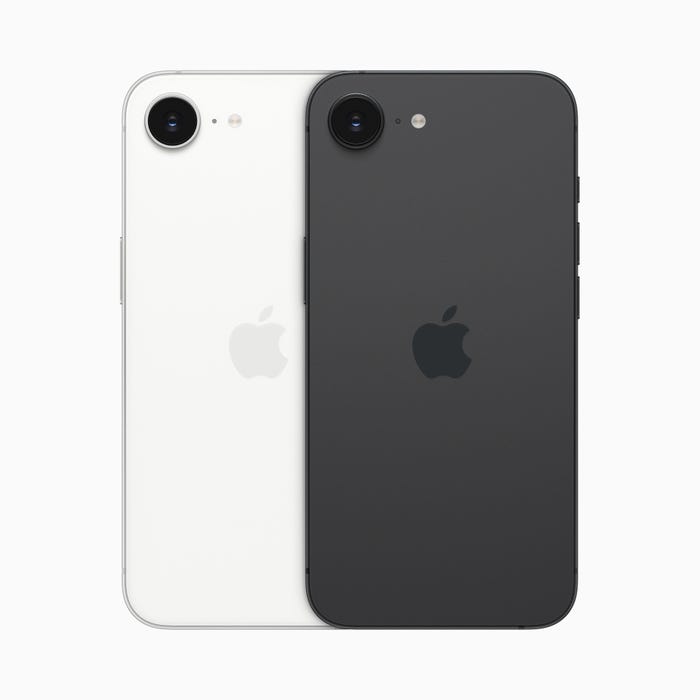Motorola Solutions acquires RapidDeployMotorola Solutions acquires RapidDeploy
Motorola Solutions today announced that the company has acquired RapidDeploy, a provider of cloud-based solutions related to 911 that will continue existing operations in the near term and closely integrate its technology into Motorola Solutions’ portfolio in the long term.

Motorola Solutions today announced that the company has acquired RapidDeploy, a provider of cloud-based solutions related to 911 that will continue existing operations in the near term and closely integrate its technology into Motorola Solutions’ portfolio in the long term.
Todd Piett, Motorola Solutions’ senior vice president of command-center and cloud solutions, said company officials are “really excited” about acquiring RapidDeploy, which previously has partnered with Motorola Solutions’ Rave Mobile Safety unit—something Piett helped build as a startup company—to win some notable contracts.
“It’s a very complementary fit,” Piett said during an interview with Urgent Communications. “They’ve got a suite of cloud-enabled applications that fit really nicely into what Motorola is doing. Beyond just the product fit and the fact that we’ve shown success going into the market together, I’m excited about the team and culture fit.”
RapidDeploy co-founder and CEO Steve Raucher noted the significant transformation of his company—a startup he introduced to the public-safety community in 2017—while expressing optimism about the future as part of Motorola Solutions.
“This is kind of a dream come true, in so many ways,” Raucher said during an interview with Urgent Communications. “As a founder, one is the validation that a market leader like Motorola Solutions wanting to acquire my platform. But also, [there is] the dream of being able to connect the other parts of the Motorola Solutions portfolio to my platform to truly give an end-to-end ecosystem and deliver that to my customers in a seamless experience.
“I think it’s an incredible opportunity, not just for Motorola Solutions and RapidDeploy, but actually for the market to deliver really meaningful [results]—to deliver on the promise of the next generation of 911.”
From a technological standpoint, Piett said that Motorola Solutions is primarily interested in RapidDeploy’s three key offerings: Radius Mapping, Eclipse Analytics and the Lightning application that lets officers in the field view computer-aided dispatch (CAD) information that is generated in the 911 center.
Piett provided some insight into how Motorola Solutions believes integrated RapidDeploy applications can enhance offerings to 911 centers.
“RapidDeploy does some really cool things in bringing in additional incremental data, such as OnStar crash data,” Piett said. “These are some unique features that have allowed them to grow and expand their market footprint, in terms of allowing [911] call-takers to really have a single pane of glass that brings together all sorts of capabilities.
“That’s something that our customers have been very consistent in wanting … We know that 911 centers are getting flooded with data. How do we bring that together in a cohesive way that makes the call-taker’s life easier? [Radius Mapping] will become deeply integrated into our VESTA call-handling solution.”
Having RapidDeploy as part of Motorola Solutions also should allow 911 centers to benefit more from the capabilities enabled by the Eclipse Analytics tool, according to Piett.
“It’s something that we don’t offer natively at Motorola, so we’re really excited about that—and we have some great plans to more intimately integrate some of the data that we have into the application,” Piett said. “Right now, they do it from [data] that available through interfaces. Clearly, once you’re integrated into the company, there’s some additional data that we can make available in reporting.”
These applications already have proven to work together with Motorola Solutions’ offerings, and Piett said he believes 911 centers will benefit from richer information relatively soon. In fact, the first offerings with these enhanced integrations could be commercially available by the end of this year, he said.
“I think that’s easily doable,” Piett said. “We were closely working together on integrations even before this. Many things have already been in the works, so you’ll see them coming soon.”
Meanwhile, RapidDeploy’s existing customers will not experience any changes in the near term, and the RapidDeploy brand will continue to be used in the marketplace, according to Piett.
“It will be business as usual,” he said. “Slowly, we will be adding more incremental features and capabilities to [RapidDeploy’s offerings], but it will be the same customer-engagement model and everything [for some time].”
Terms of the deal were not disclosed.
During RapidDeploy’s early days, Raucher was openly critical of established vendors like Motorola Solutions in the 911 arena. But that perspective has changed dramatically during the past several years—particularly after meeting key Motorola Solutions employees in recent weeks.
“Actually getting under the tent and meeting people inside of Motorola Solutions, … it is a totally different experience to realize how much these people care,” Raucher said. “They were a huge company, and I was a small company, and this David-and-Goliath narrative suited me as a startup. But in reality, these guys care more possibly than I do and certainly have been at it longer.
“Being able to take—as Todd said—some of my innovation and their experience, that’s an unbelievable combination … It’s no secret that RapidDeploy has been an unbelievable partner of Rave, and we conquered some massive territories together with our combined solutions. Leveraging that inside of Motorola Solutions is only going to make it even more powerful. I’m really excited about what we’re going to do for our customers.”
Mahesh Saptharishi, Motorola Solutions’ executive vice president and chief technology officer (CTO), Motorola Solutions, echoed this sentiment.
“In a crisis of any magnitude—a vehicle accident, medical emergency or active shooter—every second counts during the emergency response,” Saptharishi said in a prepared statement. “RapidDeploy’s technology connects first responders with critical information, so they can reach those in need faster and be more prepared, saving valuable time in emergencies.”
Motorola Solutions Chairman and CEO Greg Brown repeatedly has expressed interest in purchasing strategically important companies, although the pace of such deals has slowed during the past couple of years. Despite this, Piett said he believes the RapidDeploy acquisition marks more than 50 companies purchased by Motorola Solutions since 2016.
During the height of Motorola Solutions’ buying spree, many industry observers expressed concern that the acquisitions were reducing agencies’ choices in the public-safety market. But Raucher offered a very different perspective on the matter, noting the important role that Motorola Solutions and other established companies play making it possible for public-safety startups to get funded and develop new technological products.
“Thankfully, there are companies like Motorola Solutions, which are there to support a strategic acquisition of startups that have ideas that are germinated in the market and are able to absorb that innovative technology into their larger portfolio, because this is truly the way we will innovate,” Raucher said. “We want more startups in the ecosystem; we want more founders taking a risk and fixing other parts of the ecosystem, because it’s incredibly important.
“If it wasn’t for Motorola at the end of the rainbow for venture-capital and private-equity investors, there wouldn’t be founders at the beginning of the journey taking a chance and actually innovating for our ecosystem. It is incredibly important to understand that it [public safety] is a market that is starved of innovation, and without companies like Motorola funding the exit liquidity event for the investors, you would not get the founders in the beginning of that value chain.”





